This version of longganisa is from the province of Alaminos, Pangasinan. Unlike the Kampampangan, Tagalog or the Cebuano versions which are sweet, this longganisa is similar to Vigan or Lucban longganisa which are refined saltiness and garlicky in taste. But the most notable difference of this Alaminos longganisa is the yellow color and toothpicks that divides the longganisa links.
Actually they are not toothpicks but sharpened palm leaves sticks used in making “walis tingting” or maybe bamboo sticks are used sometimes. In this recipe I used strings to make the links because it will require some skill to do it but you can research the internet if you want it to be authentic. Just be careful when eating it or kids might ingest those sharp sticks. The ingredients used in making this longganisa by the town folks in Alaminos usually contains less salitre and mostly sea salt as the preservative and the yellow coloring is from the atchuete.
A Savory Delight from Pangasinan
The longganisa, a beloved sausage in the Philippines, showcases the country’s diverse culinary tapestry through regional variations. One such variation, the Alaminos longganisa, hails from the picturesque province of Pangasinan. Unlike its sweet counterparts, this sausage delights with a refined saltiness. It also boasts a robust garlic flavor, making it a unique and savory treat that tantalizes the taste buds.
History of Alaminos Longganisa
The hisstory is deeply intertwined with Pangasinan’s culinary heritage. Each family has added their own unique touch to the recipe, carefully passed down over generations. A key characteristic that distinguishes this ongganisa is its vibrant yellow hue, derived from the use of atsuete or annatto seeds. Traditionally, these sausages were divided into links using sharpened palm leaves, lending them a rustic appeal.
Ingredients and Preparation
To craft the longganisa sausage, combine minced pork, garlic cloves, sea salt crystals, vinegar, and atsuete powder for vibrant hues. Blend these components meticulously in a vessel until the flavors unite harmoniously. The presence of sea salt imparts a distinctive taste, setting these sausages apart from others. After thorough mixing, cover the vessel and refrigerate the blend for five days, allowing the flavors to marry exquisitely.
Stuffing and Shaping
Once the mixture has rested, it’s time to fill the casings. Utilize pork casings and a sausage stuffer to evenly pack the mixture into the casings. If using dried hog casings, soak them in warm water for three minutes to soften before stuffing. Divide the sausages into two-inch links and secure them with strings to shape them. Although traditional alaminos longganisa is shaped using sharpened palm leaf sticks, strings provide a safer option for home preparation.
Drying and Cooking
After shaping, suspend the sausages in a shaded location for a duration of four hours to facilitate drying. This process aids in intensifying flavors and guarantees uniform cooking. To prepare the longganisa, simply immerse them in sizzling oil until they acquire a golden brown hue, signifying thorough cooking. Present them piping hot, accompanied by fried rice and a fried egg, for a hearty and satisfying culinary experience.
Final Thoughts
Alaminos longganisa exemplifies the vibrant culinary tapestry of the Philippines. Its captivating medley of flavors and vivid golden hue distinguish it as a culinary gem guaranteed to tantalize your palate. Whether you revel in traditional Filipino fare or seek novel gustatory adventures, it emerges as an essential gastronomic experience certain to leave a lasting impression.
How to Make Alaminos Longganisa
Ingredients
- 3/4 kilo ground lean pork pork shoulder or pork butt
- 1/4 kilo pork fat ground coarsely
- 4 Tbsp. sugar
- 2 Tbsp. coarse salt
- 2 tsp. ground black pepper
- 2 Tbsp. vinegar
- 1/4 tsp. salitre
- 1/2 Tbsp. soy sauce
- 2 Tbsp. chopped garlic
- 1 Tbsp. rum
- Atsuete powder dilute in 1 Tbsp warm water (or yellow food coloring)
- Hog casings
Instructions
How to make Alaminos Longganisa:
- Mix all ingredients thoroughly in a bowl except the hog casing. Adjust the atsuete powder or food coloring until you achieve the desired color. Cover the bowl with cling wrap or lid and refrigerate for 5 days.
- Stuff mixture in pork casings using a funnel or sausage stuffer. If using dried hog casing, soak in warm water for 3 minutes before stuffing. Divide the longganisa by twisting into 2 inch links then tie with strings.
- Hang to dry for 4 hours in shaded area. To cook the longganisa, fry in hot oil until golden brown. Serve with fried rice and fried egg.
Notes
Cooking Tips:
- Flavor Infusion: Allowing the mixed garlic ingredients to rest in the fridge for several hours or overnight before stuffing the casings is a smart move. It gives the flavors a chance to blend together nicely, creating a richer, more intense garlic taste.
- Proper Stuffing Technique: When stuffing the pork mixture into the casings, take care not to overstuff them. Overfilled casings risk bursting during cooking. Using a sausage stuffer or funnel can aid in evenly distributing the filling within the casings.
- Safe Handling: Shaping longganisa links by hand with sharpened palm sticks poses a safety hazard. To minimize risks, consider employing kitchen twine to securely divide the stuffed sausage into individual links prior to cooking.
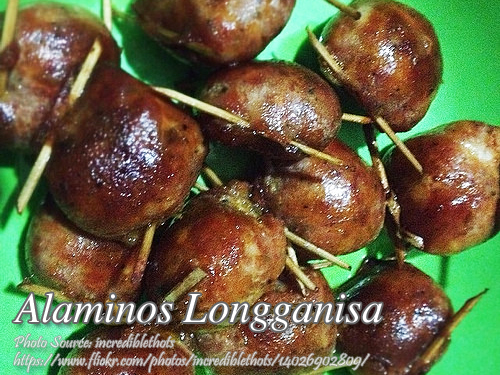

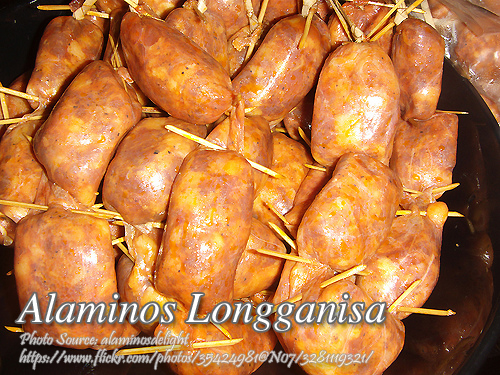
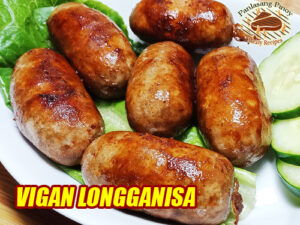
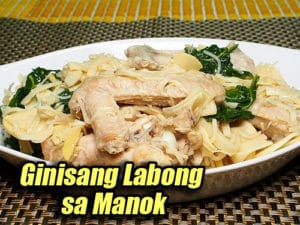
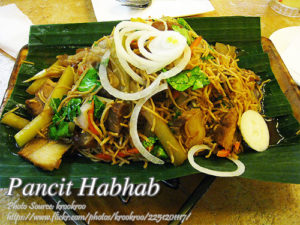
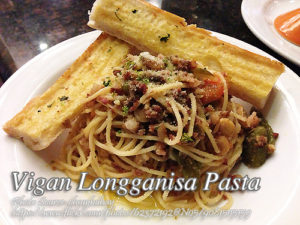
Hi, what can I replace for rum?
Hi Babes! you can use gin or brandy or pineapple juice. ðŸ˜
I missed the alaminos longaniza